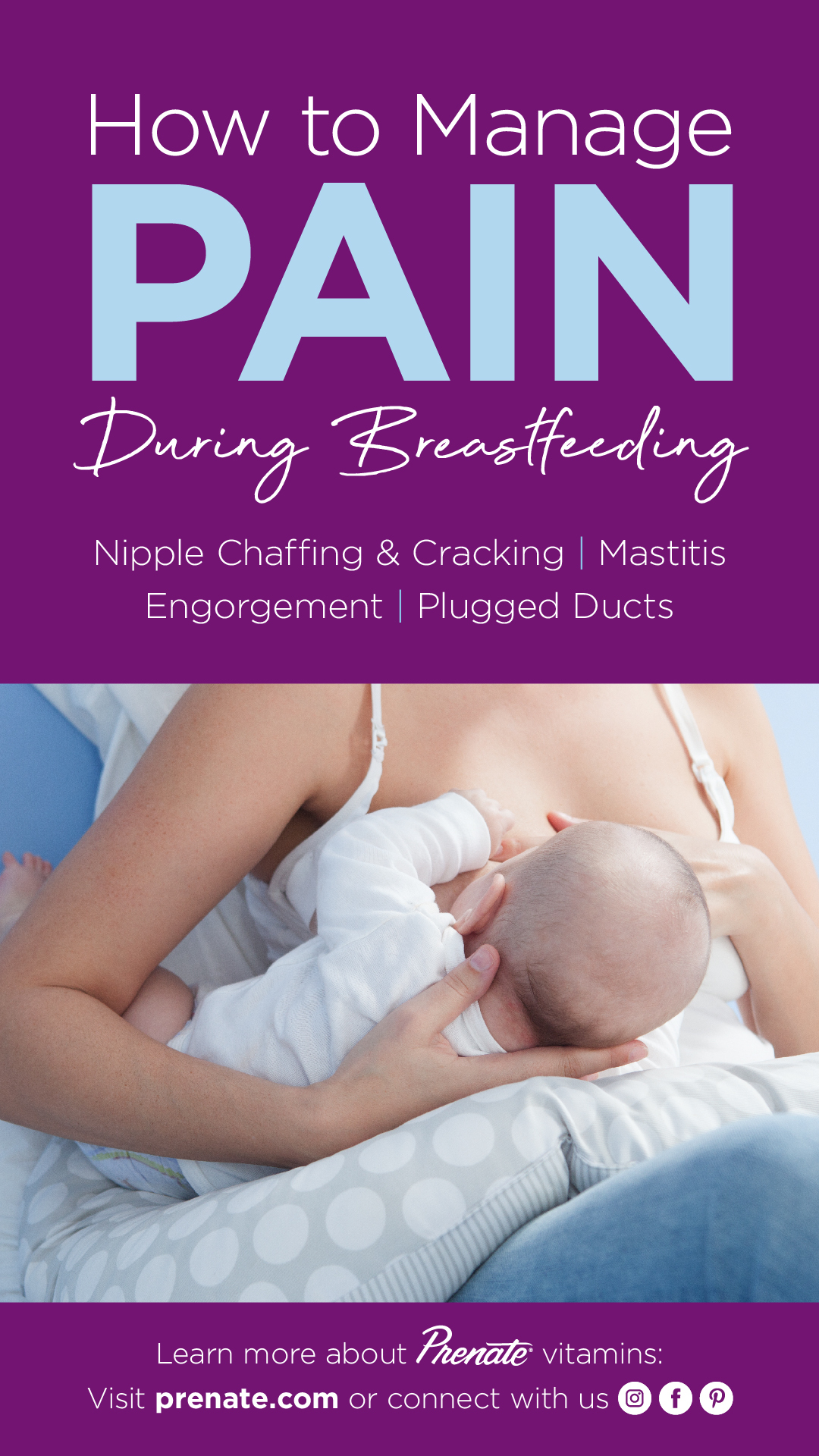Managing Pain From Breastfeeding
August 15, 2017
Many women who breastfeed start out with the intention of breastfeeding exclusively for six months. They know and understand the health benefits of breastfeeding for babies and set breastfeeding goals. Unfortunately, breast pain causes many women to wean their babies earlier than intended.
Sources of Pain from Breastfeeding
There are several conditions that can cause pain for mothers who breastfeed. These range from minor chaffing to potentially serious infections. Here are possible reasons for breast pain during lactation:
- Nipple Chafing and Cracking – This is commonly reported by new mothers. When a baby does not have a strong latch, breastfeeding can be painful and result in chafed or cracked skin on the nipples, and even bleeding.
- Engorgement1 – A woman’s breasts become engorged when they contain too much milk. This can occur as her milk comes in, usually in the first few days after she delivers her baby. Engorgement is also common if a breastfeeding routine is interrupted or suddenly stops. In these instances, breasts become full and swollen, and feel hard and lumpy to the touch. This condition can be very painful. Unfortunately, engorged breasts are difficult for babies to latch on to properly. This means that the baby may not get enough milk and the mother’s milk glands may not empty completely. The poor latch also can cause nipple chafing and cracking, which can cause mom to breastfeed less often. Without treatment, this can create a cycle that makes the condition worse and ultimately causes the mother to give up on breastfeeding. In addition, severe engorgement can lead to blocked milk ducts or mastitis.
- Plugged Ducts2 – Breast milk flows from mammary glands through ducts in the breast and out through the nipple. It is not uncommon for one of these ducts to become blocked, which leads to inflammation. Many times, a tender, sore lump will appear on the breast with the blocked duct.
- Mastitis3 – Mastitis is a condition in which a woman’s breast tissue becomes inflamed or infected. It occurs most commonly in breastfeeding women and is caused by bacteria that enter the breast through a cracked or sore nipple. Pain, swelling, and redness of the breast are signs of mastitis. Often these symptoms are accompanied by red streaks, drainage of pus from the breast, and swollen lymph nodes in the neck or armpit. Flu-like symptoms are also common, including fever, chills, and fatigue.
Breastfeeding Support & Pain Management
If a mother and baby are able to achieve a good latch early, exclusive breastfeeding is more likely to last longer.4 It is important for women who have breastfeeding goals to establish a supportive network of healthcare providers and lactation consultants prior to or soon after delivery. This network can serve as a resource for advice and possible therapies to help with any pain management from breastfeeding.
The best way to get ahead of any difficulties with breastfeeding is to learn how to help a baby achieve a strong and proper latch as the likelihood of weaning increases the longer pain persists.4 If you find yourself wanting to delay feedings for your baby, get help from a lactation consultant. Delaying feedings can cause more pain.
These tips can help prevent and treat common soreness and chaffing issues:
- Try changing breastfeeding positions so that you aren’t always putting pressure on the
same areas of the breast.5 - After feedings, express a few drops of milk and massage it onto your nipples after
cleaning your hands. Breastmilk has natural health and soothing properties.5 - Avoid bras or other clothing that are too tight; purchase a bra or two that is supportive
and comfortable.5 - Change nursing pads often and keep nipples dry after feedings.5
- Talk to your doctor before using any creams, gels, or ointments. They have may chemicals or astringents that could cause more harm than good for you and your baby.5
- Ask your doctor about pain relievers that are safe during breastfeeding.5
If pain escalates to a more serious condition, such as engorgement or blocked ducts, try softening the breast by applying a warm compress before feeding sessions. A cold compress, applied for 15 minutes each hour after breastfeeding, can help reduce swelling. Expressing milk more often, either from feeding or by using a breast pump, can alleviate pain related to engorgement. For plugged ducts, more frequent breastfeeding can help loosen the plug and keep milk moving freely. Treatment for breast infections or mastitis usually involves antibiotics.
A study in 2015 found that therapeutic massage helped women find immediate relief from pain associated with breastfeeding.4 In a follow-up survey, 92% of the women in the study reported a reduction in pain and 43% reported pain resolution.4 Lactation consultants can help train mothers on the proper breast massage techniques to perform at home.
Vitamins for Breastfeeding Moms
Getting proper rest and nutrition is also an important part of breastfeeding success. A plugged duct or infection can be a sign that a mother is doing too much and is overly tired.4 Resting with your feet up can help speed healing.
Breastfeeding takes a lot out of mothers. Women who breastfeed their babies need increased nutritional intake to restore their reserves and support infant growth. Certain nutrients, such as calcium, vitamin D, and DHA, are especially important during this critical stage of a baby’s development.
Prenate® Restore is a once-daily vitamin for breastfeeding that’s designed to support the
nutritional needs of moms and their babies. Prenate® Restore includes nutrients such as calcium, vitamin D, DHA and probiotics that help infants achieve optimal growth and promote brain, immune system, and gut development.6-8 Prenate® Restore is also appropriate for women to take during pregnancy, which means that expecting mothers can start supplementation with Prenate® Restore before the arrival of their baby and continue taking it through delivery and postpartum. Talk to your doctor to see if Prenate® Restore is right for you.
You Are About To Leave This Website
By clicking continue, this link will take you to a website to which Alora Pharmaceuticals Policies & Terms of Use do not apply. Alora and its subsidiaries do not control the content or accuracy of third-party websites and assume no responsibility for their use.











